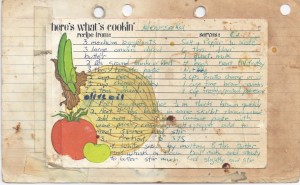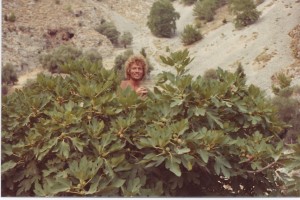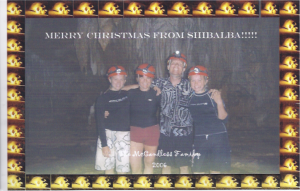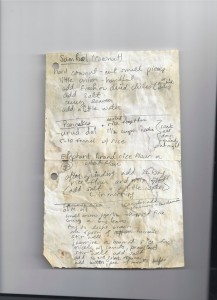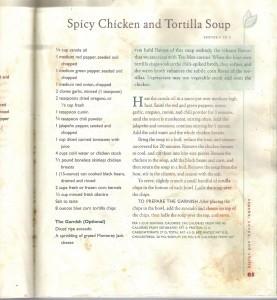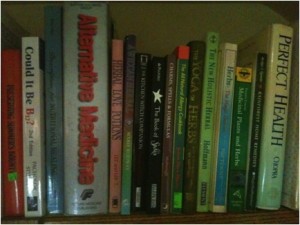 |
| secret books of my fancy |
I know how to wear a suit and manage a business meeting. I am at home in the high technology world of telecommunications and can find my way through a brief full of legal jargon, but in my heart of hearts, I hanker to be a witch. Not a Wiccan, per se, but rather a tarot-card-reading, crystals-in-the-corner, mortar-and-pestle-in-the-kitchen, herbs-and-tissue-salts, type of gypsy-shaman-witch. My pantry holds the secret books of my fancy: Rainforest Home Remedies, Alternative Healing, The Yoga of Herbs, The Kitchen Witch Companion, New Holistic Herbal, Herbal Love Potions, and more.
So, when someone gets sick in our household, the first thing that goes on the stove is homemade chicken soup, followed by a rash of supplements, homeopathic offerings, and lots of hot tea. This winter Jay got the crud bad, maybe the worst ever. He was laid up for three weeks, re-discovering how bad movies and TV shows can get. This time, while I worked on revitalizing my knowledge of immune boosting supplements and folk cures, I also researched online for new chicken soup recipes. (Thank God my hankering to be a witch has coincided with the era of the internet!) Along with some of the other witchy and effective cold and flu fighting lore I have picked up over the years, I discovered one recipe recently I’d like to share with you all: Immune Boosting Chicken Soup. I found this pearl online at healthychefs.com It is a simple soup, with a bit of chicken, and lots of ginger, garlic, turmeric and cilantro, and beaten egg swirled in. It is “mommy, I don’t feel good, but this tastes yummy” good.
Now, about herbs for the immune system, I have some familiarity with that as well. Almost twenty years ago, I took a class called—wait for it—“Herbs for the Immune System”. It was offered at the Herbfarm in Issaquah, WA, which has some notoriety for its nine course dinners made by award winning chef, Jerry Traunfeld. I never have dined at the Herbfarm (there tends to be a six to twelve month waiting list) but I did attend classes or visit from time to time, making me . . . dangerous.
I wrote an article about the experience that I originally called “Just Call Me a Hot Lipped Dilettante”. This was published and renamed “Home Remedy Makes One Hot Mama” in the Feb/March 2008 online issue of humorpress.com. I offer it here as fair warning for any advice I am about to dispense.
Home Remedy Makes One Hot Mama
By my own admission, I am a dabbler in life, filled with pseudo expertise, while totally lacking common sense. In college, I changed my major eleven times, until it dawned on me that honor grades alone would not produce a diploma. Now, as a married woman, raising kids and operating my own business, I still dilly-dally, vacillating from meditation to mediation to legal research to alternative health. The result is, I often know a little about a lot, which sometimes gets me into trouble.
On the fated day, I talked to gynecologists, herb specialists, even Harborview Burn Center, all of whom admitted they had never faced such a problem. “You did what?” “Oh you poor thing,” they all whispered under their breath, while trying desperately not to say “how could you do something so stupid!” But there I was in excruciating, yes, worse than childbearing, pain. What had I done? It was simple enough. I tried to treat a vaginal yeast infection, by a rather non-traditional method.
I had taken a class a few years back, you see, called “Herbs for the Immune System.” The teacher, I recalled, had espoused the marvelous benefits of a product called grapefruit seed extract. “Would kill anything,” he said, including, you guessed it, yeast infections. We happened to have some of this marvelous product in the house. (It really does tame a sore throat if you gargle with a few drops diluted in water—tastes like soap and makes you gag, but it works.)
Anyway, I failed to read over my notes, which would have reminded me to use the product in a suppository form. I also failed to read the warning label on the bottle: “Avoid contact with eyes or skin at 100% full strength. Use sparingly due to extreme potency. Do not exceed three drops per usage.” Instead, I relied on my own expertise and inserted two droppers of the stuff. That ought to kill it, I thought.
After a while, I felt some tingling down below. Great, I thought, it’s working. But it wasn’t long afterwards, the tingling increased in intensity. Soon I was in screaming agony. Nothing I did stopped the burning. It started to blister. I bathed in baking soda, douched with Acidophilus, applied ice. My husband and I huddled on the couch trying not to think of our future nights together.
After all known home remedies to stop the burning failed, my husband took me to Virginia Mason Emergency.
“What’s the problem, honey?” the receptionist asked sweetly as my husband wheeled me to the front desk.
“I think I burned myself.”
“Okay. What happened?”
“Well, it was, um, from an herbal product,” I flushed, trying to avoid telling her the whole truth.
“An herbal product? And, where is the burn?” she asked peering over the counter curiously.
I gave up and told her the whole story. She listened intently, trying not to react, but I noticed she crossed her legs and wouldn’t look me in the eye after that.
Several other hospital staff members somehow found reason to come check on me. I figured I was the latest coffee break story and they were all trying to get the facts straight. I remember one no nonsense nurse who came in to jot down a host of miscellaneous information. She hadn’t been briefed yet.
“Have you had any medication today, deary,” she asked taking notes.
“I’ve had two Percocets and a Tylenol with codeine,” I slurred.
“Now, why have you had so much pain medication?” she challenged, mistaking me for a druggy.
“Because I burned my vagina,” I said, by now enjoying the shock value and her momentary lack of composure.
She gave a little “oh-my-poor-dear” gasp and hurried out of the room.
Eventually, a female doctor examined me and deduced in hushed tones and a sympathetic voice that I had suffered second degree burns. She prescribed a soothing ointment and more pain pills, but explained the best help would be time.
Whether this incident has curbed my dabbling streak, I can’t be sure. I am happy to report, however, that vaginal tissue has a remarkable ability to heal itself. My only remaining scar is a bruised ego and my mother’s words haunting me: “How can you be so smart and so dumb . . ?” which reminds me of the time when I was seven and tried to see if electric scissors, famed for being able to cut anything, would cut my tongue . . . but that’s another story . . .
Still—despite my error in judgment the first time I used grapefruit seed extract, I still highly recommend this product for it really will tame a sore throat, if used diluted and sparingly.
Here is my gypsy/shaman/witch list of supplements and folk cure remedies that make my “remember to do or take when you get a cold or flu” list:
· Grapefruit Seed Extract
o dilute and gargle for a sore throat
· Andrographis Paniculate
o not as well known as Echinacea and Astragalus, but Jay swears by it—and he is not nearly as gullible as I
· Astragalus
o associated with a significant age-reversal effect in the immune system, have seen it work for Jay
· Oscillococcinum
o (European homeopathic flu remedy) – Ever since I literally watched my fever begin to plunge and suddenly recover in the course of an hour after diligently taking this, I am a believer. I always have it on hand.
· Vitamin D
o enhances innate immunity and inhibits the development of autoimmunity, plus many of us are deficient
· Drink lots of liquids, especially hot tea with honey
o “Breathe Easy” for sinus congestion
o “Herba Tussin” for colds and cough (my new favorite)
o Coconut Water – I swear drinking a coconut a day in India kept me from getting sick from the very polluted air
· Antronex
o natural antihistamine for allergies
· Vitamin C
o especially EmergenC packets that you dissolve in hot or cold water
· Rinse Sinuses with neti pot and sterilized water
o this is hands down the most effective remedy for preventing sinus infections
· Consider getting a chiropractic adjustment
o it’s amazing how being a little out of alignment will keep you from getting better
· Call Dr. Manlove or your favorite nutritional healing person
· Chicken Soup!
The witch inside me says, whether you or sick or not, get those stovetop cauldrons boiling with a good fresh pot of Immune Boosting Chicken Soup. It’s that time of year, after all.
Healthy Chef Version : My adaptations:
|
10 cloves garlic
|
|
|
2 Tbls finely grated ginger
|
|
|
1 Tbls freshly grated turmeric
|
I didn’t know about fresh turmeric and am excited to look for it; I used ground turmeric
|
|
1 liter (35 ¼ fl oz) chicken or vegetable stock
|
I used two boxes of free range organic chicken broth instead of adding any water; (sometimes I make my own chicken broth by boiling a whole organic chicken with carrots, onions, celery, salt and pepper)
Vegetarians can substitute vegetarian broth
|
|
1 liter (35 ¼ oz) water
|
(see above)
|
|
500 g (17 ½ oz) free range/organic chicken breast, cut into chunks
|
Vegetarians can substitute tofu
|
|
2 bunches coriander, chopped
|
This is what we call “cilantro”
|
|
¼ cup mirin or rice wine
|
(note: not rice vinegar)
|
|
3 Tbls tamari soy sauce
|
|
|
2 eggs beaten
|
3 beaten eggs
|
|
Cooked white rice (to make it a bit more filling); I use short grain sushi rice often
|
|
Optional: additional vegetables: mushrooms, spinach, kale
|
I added green beans on the second day
|
o Combine the garlic, turmeric, ginger, stock, water and chicken into a large pot. (I have also sautéed the garlic and ginger for a couple minutes first.)
o Simmer for 5 – 10 minutes over low heat until chicken is cooked through and flavors have infused into the stock.
o Pour beaten eggs in a thin stream over the simmering stock
o (Add rice)
o Add mirin, tamari, and coriander just before serving
Here’s to adding a dash of magic, a silent prayer, and a whole lotta love to your pots when caring for those you love this cold and flu season.


